The Viability of Hydrogen Fuel Cells in Formula One
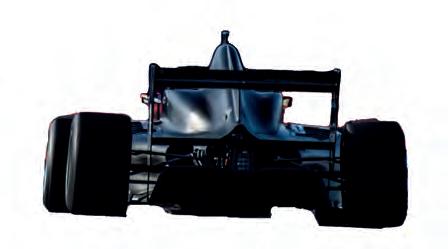 By Rohana Saunders (Lower Sixth, Queen Anne)
By Rohana Saunders (Lower Sixth, Queen Anne)
If you are anything like me than you are a petrol head. And when it comes to the motor world nothing beats Formula One. This alluring sport truly encapsulates speed, technology and most of all luxury. However, with today’s climate crisis the future of the F1 world needs some serious reformation. Hence the question comes to mind. Can hydrogen, the worlds new emerging CO2 neutral fuel, become the new power source of Formula One?
Firstly, I had to make some comparative calculations to determine how much hydrogen fuel would be required to deliver the same energy output as the same volume of fuel an F1 car carries per race. By using some plastic box dimensions, I found on Ikea, and a blueprint of a Formula One fuel tank I was able to determine each car could hold 110kg of Formula One fuel which (upon undergoing complete combustion) would produce roughly 500,000KJ of energy. Next, I determined the energy produced via the formation of H2O. By calculating the moles of water produced from 110kg of hydrogen fuel and multiplying it by the energy produced from the bond formation of 1 mol of H2O I realised 15720000 KJ would be produced. Roughly 31 times more energy. In theory this sounds like a great fix, right? Because in fact only 35.5kg of hydrogen would be required to give the same energy output. Lighter fuel, lighter cars more speed on track. Perfect right?
The main issue arises when one compares the space 35.5kg of hydrogen fuel in standard conditions would take up compared to the original 110kg of petroleum + ethanol fuel. After dividing my calculations a few times, I determined you would have to refuel the car more than 3x in order to complete a full race. This isn’t completely unheard of, in the earlier days of the sport the pit crew of each car would have had to make routine stops to refuel the vehicles. However, this comes with a multitude of its own dangers with there being countless examples of when these refuels would result in the whole car and pit crew catching on fire. With hydrogen being an even more flammable fuel, the results would be catastrophic. Additionally, each hydrogen refuel would need to take around 4-5 minutes. This conclusion would completely diminish the fast-paced nature of the sport or would require a completely new and bigger car. I instead investigated compressing the hydrogen as a gas to avoid refuelling. Using the ideal gas equation, (PV=NRT) I wanted to determine the value for pressure. I modelled the temperature from the extremely hot breaks and cockpit plus the average UK temperature. Volume was the space in the fuel tank in m the number of moles in 32.5kg of hydrogen and R was the gas constant (8.31 mol−1K−1). After plugging that into a calculator I determined a pressure of 2083 atmospheres would be required to hold this gas. The material required to hold this pressure simply does not exist! Even if if you managed to find one the car would essentially be a bomb on wheels.
15 53 8 68 66 6 13 Issue 3 - March 2023 Printed on recycled paper Design and Layout: Mr N Brownless
After coming to some hopeless conclusions, I decided to look at some real-life examples of hydrogen as an everyday fuel. NASA was the obvious first choice as a company who has managed to use liquid hydrogen fuel for almost 70 years. How do they use it though, and safely? The answer is the immense amount of infrastructure they have built up over years has allowed them to (not always) safely use this fuel. NASA’s launch site is off the coast of Florida and their hydrogen storage system is a ferry ride away on an island. This ensures safe keeping, transportation of fuel, distribution and ultimately combustion, however not always safe.

So, this is what the main issue comes down too - safety. Firstly, to get a full understanding as to why this super fuel isn’t being used in everyday vehicles, I had a look into what was preventing it. The versatile nature of hydrogen means that it is incredibly flammable, and when stored in its practical state even more so. Some of the more notable disasters with this fuel include the Hindenburg disaster of 1937 and the Challenger shuttle disaster of 1986. What do they both have in common? Hydrogen fuel as the source and an extremely slim survival rate. Even if this fuel was treated as a specialist fuel for Formula One, the expectation of countries from Azerbaijan to America, to be able to set up on-the-go fuelling stations is somewhat crazy. Let’s say one was able to do such a thing then the car component temperatures of nearly 500°c and the sparks of the cars would be disastrous. Additionally, crashes. The standard principle of Formula One dictates there will be crashes. The sport strives to pit the newest and fastest piece of technology all together within a racecourse with a human driver. Crashes are inevitable and, at the speeds of 270mph, very often extremely damaging for the car. It is by no means uncommon to see a car set on fire post-crash or parts to the chassis and engine split into bits exposing sensitive and reactive parts of the car. Now imagine that with a car full of hydrogen. A single flame and anything within a good few 100 meters would be obliterated. Unlike in the situations of the cars today often drivers can walk away from a crash unharmed. However, you put them onto on one of the world’s most reactive fuels… survival rate would be nil every time.
So, for now the short answer is no. Millions upon millions of dollars would need pouring into this developing technology and ways to mitigate the dangers posed by the fuel would need some serious development. Whilst in theory a more energy dense fuel would be able to produce faster speeds, in order to hold enough the cars itself would need completely redesigning around a new fuel tank. And most sadly the international aspect of the sport would need to be diminished. The possibility of every single F1 country being able to build, maintain, and developed the infrastructure for hydrogen fuelling centres is a long way in the future. As for now F1 remains a petroleum fuels sport and will continue to do so for the future to come.
Beavers
By Luella Hickey (Second Form, Swift)
Beavers went extinct in the UK 400 years ago, in the 16th century. Beavers live to about 15-20 years old and can hold their breath for up to fifteen minutes underwater. Beaver’s homes are called lodges and beavers can help the water flow and stop flooding. Following reintroduction there are now two types of beaver in the UK: the Northern American beaver and the Eurasian beaver. They’re also the second largest rodent after capybaras. They’re found in the Northern Hemisphere.
Fun facts about beavers:

• There are 2 different types of beavers
• The young beavers are called ‘kits’
• Beavers can now be found in Hampshire
• Beavers hide their food under water during the winter
• Beavers create ponds in wetlands
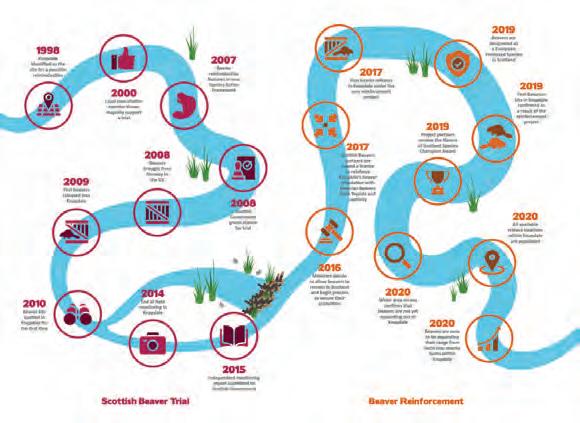
• Beavers communicate to each other by slapping their tails.
Eco Club Pond Restoration Project


As part of the Great British Clean Up, and our application for the Eco-Schools award, the Eco Club will be undertaking a restoration of the pond area by the Captain’s pitch. Reaching the end of his useable life, Keith the Peacock will be repurposed in the project to provide wood for a bug hotel, bee hives, duck platform, bird feeders and other spaces for wildlife.
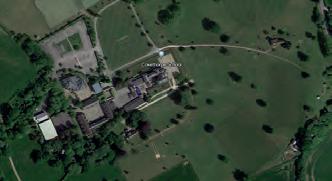 Beaver reintroduction timeline into UK rivers
Beaver reintroduction timeline into UK rivers
Eco Club
How Did Birds Survive While Dinosaurs Went Extinct?
It wasn’t flying that gave birds the advantage.
Perks of being toothless
Today’s birds have no teeth. Instead they have beaks or bills, which come in many shapes and sizes for eating and drinking. But some of the birds that lived in dinosaur times actually had teeth. Others did not.
In the image the foreground shows an artist’s rendering of a bird head. In the background is a fossil photo showing that bird’s skull. Teeth are clearly seen in the jaws.

After the asteroid struck Earth long ago, all birds with teeth went extinct. But many of the toothless ones kept living. Some scientists think not having teeth is what allowed these birds to survive.
Fossils of early toothless birds show they were able to eat more plant-based food – specifically nuts, fruits and seeds. This meant they relied less on eating other animals than birds with teeth did. Some scientists think this difference in diet became a big advantage after the asteroid impact.
When the asteroid struck Earth, it immediately caused massive tsunamis and earthquakes. A giant pulse of heat from the impact caused enormous wildfires near where the asteroid hit. In the months that followed, huge amounts of dust filled the layer of air that surrounds Earth. It blocked the sun, making less light available for plants to grow.
For animals that ate plants, there was much less food. Many went extinct, which spelled trouble for the animals that ate them.
Since so many animal species died – and plants were struggling to get enough sunlight – food would have been hard to find if you were a bird. But if you could peck the ground and find buried seeds or nuts to eat, that might have made all the difference in your ability to survive as a species.
Ichthyornis dispar was a primitive seabird with teeth that lived during the late Cretaceous Period – from 100 million to 66 million years ago – in North America.
So You Think You Know About Antartica?
• Antarctica is the only land on our planet that is not owned by any country.

• Ninety percent of the world’s ice covers Antarctica. This also represents 70% of all the fresh water in the world.

• As strange as it sounds, however, Antarctica is essentially a desert: the average yearly total precipitation is about two inches.
• Although covered with ice (all but 0.4% of it is ice) Antarctica is the driest place on the planet with an absolute humidity lower than the Gobi desert.
Meet the Scientist: Rosalind Elsie Franklin by Rosie Waymark (Second Form, Harcourt)

Rosalind Franklin (25 July 1920 –16 April 1958) was a British chemist and X-ray crystallographer, whose work was central to the understanding of the molecular structures of DNA. She took the crucial X-ray photograph enabling James Watson and Francis Crick to build their double helix model of DNA and was unjustly deprived of a Nobel Prize. On top of her famous investigations into DNA, she also made foundational contributions to modern understandings of coal,graphite, and viruses. Franklin studied chemistry at Cambridge –although as a woman, she was not allowed to graduate –and subsequently engaged in national war work by joining the British Coal Utilisation Research Association in 1942. Using helium, she studied the porosity of coal, concluding that as the temperature increases, substances are expelled in order of molecular size. Her findings were valuable for predicting fuel performance and for manufacturing gas masks, and in 1945 Cambridge University awarded her a PhD.

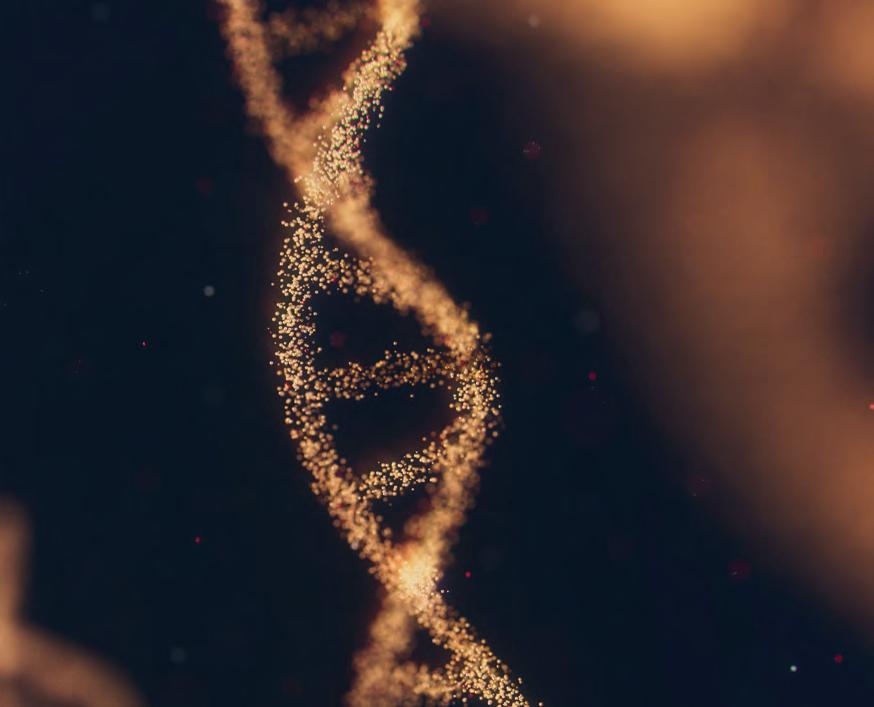
Sadly, she was diagnosed with ovarian cancer in 1956, shortly after a work trip to California, and received surgery. Although she did return to the laboratory, she became increasingly weak, and was cared for by her family until she died at age 37.
Chocolate Facts
With Easter around the corner, here are some chocolate facts to digest:

• Cacao has been cultivated by the early Mesoamerican cultures for at least three millennia. Earliest use of Cacao dates back to Mokaya (Mexico and Guatemala), chocolate beverages first seen as early as 1900 BCE
• Chocolate processing consists of a multistep process which, starting from cocoa beans, involves fermentation, drying, roasting, nib grinding and refining, conching and tempering
• Dark chocolate is considered the healthiest form of chocolate due to the low content of sugar, high percentages of cocoa, flavonoids, and theobromine compared to milk chocolate or white chocolate
• The process of processing and producing milk chocolate was popularized by Milton S. Hershey, founder of The Hershey Company
• The first chocolate eggs were made in Europe in the early 19th Century. John Cadbury made the first Cadbury Easter eggs in 1875
• The world’s biggest Easter egg was more than 34 feet tall. According to Guinness World Records, the chocolate egg weighed 15,873 pounds. It was made in Cortenuova, Italy
• The most expensive chocolate egg sold for £7,000! The expensive egg sold in London on 20 March 2012. It was so expensive, it became the world record for the most expensive edible egg! The egg was decorated with gold leaf and white flowers. It took three days to make!
• Around 80 million Easter eggs are sold in the UK each year!
Vet Med
How Ancient Languages Influence Medicine
 by Aoife Kirkham (Lower Sixth, Feilden)
by Aoife Kirkham (Lower Sixth, Feilden)
As I have studied ancient languages and the sciences, it is apparent that many of the terms used in science and medicine come from the ancient terms. Here are few which you may or may not be aware of.
Dermatology: a branch of medicine concerned with the diagnosis and treatment of skin disorders
Greek word ‘δέρματος’ (dermatos) meaning ‘skin’
Oncology: the study and treatment of tumours
Greek word ‘ὄγκος’ (onkos) meaning ‘bulk, mass, tumour’
Cardiology: branch of medicine that deals with diseases and abnormalities of the heart
Greek word ‘καρδιά’ (cardia) meaning heart
Ophthalmology: the branch of medicine that diagnoses and treats disorders of the eye
Greek word ‘ὀφθαλμός’ (opthalmos) meaning eye
Pathology: the study of causes and effects of diseases, usually involving laboratory examination of samples of body tissue for diagnostic or forensic purposes.
Greek word ‘πάθος’ (pathos) meaning ‘pain, suffering, death’ come from the verb ‘πᾰ́σχω’ ‘to suffer’
Theriogenology: speciality of veterinary medicine concerned with animal reproduction
Greek word ‘θηρῐ́ον’ (therion) meaning ‘beast, wild animal’ and ‘γένεση’ (genesis) meaning beginning
Podiatry: treatment of the feet and their ailments
Greek word ‘πόδι’ (podi) meaning foot
Pharmacology: medicine which focuses on the uses, effects and modes of action of drugs
Greek word ‘φάρμακο’ (farmako) meaning ‘drug, medicine’
Equine: Latin word ‘equus’ meaning ‘horse’, you also get words like ‘equestrian’
Bovine: Latin word ‘bos’ meaning ‘cow, bull, ox’ genitive form is ‘bovis’ hence bovine
Porcine: Latin word ‘porcus’ meaning ‘pig’ adjectival form ‘porcinus’ relating to a pig, swine or hog
Poultry: Latin word ‘pullus’ meaning ‘chicken’
Canine: Latin word ‘canis’ meaning ‘dog’, you also have canine teeth which resemble those of dogs
Feline: Latin word ‘feles’ meaning ‘cat’
Avian: Latin word ‘avis’ meaning ‘bird’, birds are housed in ‘aviaries’ at zoos
Reptilian: Latin word ‘repo’ meaning ‘to crawl’, adjective ‘reptilis’ meaning ‘creeping, crawling’
Perhaps in your day to day life you wonder where a word has come from or why it means what it has come to mean, the answer almost always lies within ancient languages. Some of you may decide that you would like to specialise in one of these professions and now you know what it means and where it came from. I can say from experience that studying the ancient languages, working out the roots and meanings of scientific terminology was much easier and as a result I have been able to remember them much more clearly.
Road Traffic Accident Case at a Small Animal Vet Clinic
 by Rachael Elliott (Lower Sixth, Feilden)
by Rachael Elliott (Lower Sixth, Feilden)
In February Half Term I visited a veterinary practice to get experience into what being a small animal vet is like. While at the practice I watched many different surgeries. For example, common procedures such as spays, dentals and lump removals.
During the week there was one case which I found particularly interesting. The patient was a two year old cat who had been in a road traffic accident. She had been brought in in the early hours of Monday morning after being found by her owners in a lot of pain. The owners had recognised she was limping, had rapid shallow breathing and was fairly unresponsive.
They immediately brought her in to the emergency vet at the surgery who quickly recognised she had dislocated her right hip, but that was not the main problem. The cat had a diaphragmatic hernia, meaning she had a split in her diaphragm which had allowed her stomach to move into her rib cage. The only possible way of fixing her and allowing her to breathe normally was through surgery, which she was too unstable for.
She spent Monday morning in an incubator which maintained her temperature while helping her to breathe. On Monday afternoon the vets decided that if she was not taken into surgery the damage to her diaphragm would be fatal, so they gave her anaesthetic and prepped her for surgery. Just before she fell asleep, she crashed, meaning her heart stopped and she stopped breathing. After around two minutes the vets managed to resuscitate her, and she was taken for surgery. This went successfully and after around two hours she came out of surgery and returned into her incubator.
Normally it should take a cat less than an hour after a major surgery to show signs of consciousness however the cat did not wake up for fourteen hours. Even after this time had passed the cat could still not breathe on her own and had to have a large supply of oxygen.

Sadly, as soon as the cat was able to move, its hip would dislocate again, although this is not a major problem as it is not a life compromising injury. The only way of fixing the hip would be by taking the cat back into surgery, which was not an option due to the cat’s state.
Over the next 24 hours the cat slowly became more responsive and began to start eating food and moving around in its incubator. On the Wednesday the vets were able to take the cat off the oxygen and move it into a kennel where it would spend the rest of its time at the vets. While examining the cat, the vets quickly realised it had retinal detachment meaning that the nerve at the back of the cat’s eye, connecting the eye to the brain, had become loose causing the cat to be blind. Although this could have happened from the impact of the car, the likelihood is that the cause was from post-traumatic stress. High blood pressure caused from stress was likely the cause of the cat’s blindness. Often retinal detachment does not lead to permanent blindness, but unfortunately this cat was likely to be blind for the rest of its life.
Over the next few the days the cat got better, especially after its owners began visiting. By Friday, the cat was ready to be discharged. Although the cat still had a dislocated hip it was able to go home and rest for a few weeks before coming back for surgery to fix it.
This work experience showed me the highs and lows of being a vet, the range of different encounters vets have and the extraordinary work they do to fix what I originally thought was unfixable. Not only did the cat survive but it was back home within a week of being in a life-threatening situation.
What Lies Ahead?
by Archie Pryor (Fourth Form, Swift)
In 1964 a soviet astronomer named Nikolai Kardashev conceived of a scale by which the technological advancement of a civilisation could be measured by its energy consumption. In this article we will go over essentially every single aspect of this scale as well as what future civilisations could look like, how these civilisations could be possibly be reached in the form of hypothetical energy sources and other methods of measuring civilisations that have been proposed by the likes of John Barrow and Carl Sagan. Before continuing it is important to note that this scale is hypothetical so there is absolutely no need to panic… yet.
The aptly named Kardashev Scale is made up of three different civilisation types; however other extensions to the scale have been proposed. The advancement energy consumption climbs with each type of civilisation so why not start from the bottom with Type 0. Now Kardashev didn’t suggest a Type 0 civilisation however I feel that it is necessary to mention as humans are currently a Type 0 Civilisation. This means that we do not have access to all the energy available on our home planet, Earth. In other words, we are still using non sustainable energy sources such as coal and wood. As of 1973 we were roughly 0.7 on the Kardashev scale meaning that we will likely reach Type I within the next hundred years.
Now onto Type I. This civilisation would have complete control over all energy that reaches its home planet from its mother star, in Earth’s case this would be the Sun. For Earth to become a Type I civilisation it would have to have an energy consumption of 2×1017 watts. There are several ways in which this civilisation status could be reached with a few examples being a large-scale application of fusion and antimatter (more information on both of those later). If neither of those could be used then simple renewable energy sources like hydroelectric and solar power could also be used. Now onto Type II. A Type II Civilisation is capable of utilising absolutely all energy radiated from its mother star and not just the energy that reaches its home planet. This would likely mean the
construction of a large-scale mega structure such as a Matrioshka Brain or a Dyson Sphere/ Swarm (again, more on those later). As a result, this energy consumption would be akin to the luminosity of the sun at around 4×1026 watts. That may not sound like much, but I can assure you that it is a huge amount. Lastly onto the Type III Civilisation. A Type III Civilisation is almost an extension of a Type II in that it is able to harness all the energy in its respective galaxy rather than it’s mother star. A society such as this would have access to power comparable to luminosity of the entire Milky Way with a power consumption of around 4×1037 watts. A civilisation such as this would most likely not be comparable to humanity in terms of the dominant species but would be more likely a highly evolved possibly cybernetic or at least highly genetically modified species. Kardashev did not believe that a Type VI Civilisation was possible so did not create a classification for it however several high Types have been speculated and will be addressed later in this article.
Now onto the very interesting stuff… how will humanity reach this point? I will mainly be addressing energy sources and megastructures in this segment of the article but no need to worry as they aren’t boring old geothermal and hydroelectric power. I’ll go up in energy sources for each civilisation type starting off with Type I. The most obvious sustainable energy source for the future is of course nuclear fusion. The premise behind fusion is fairly simple and works by merging two light nuclei to form a single heavy nucleus. This releases energy because the resulting mass of the newly formed nucleus is less than the original mass of the two light nuclei as the missing mass become energy in accordance with Einstein’s famous equation E=mc2. For this to work however as a sufficient global energy source, it would need to be on an enormous scale, something that is not possible at the current time.
Another possible energy source to further the advancement of the human race to a Type I civilisation would be the usage of antimatter. Antimatter is a particularly fascinating yet surprisingly simple concept, at least at its core. Antimatter is just matter composed of
antiparticles or the corresponding particles that make up normal matter. It is generally described as matter that has a reversed charge. For instance, a proton has a charge of +1, an antiproton however has a charge of -1. They have, in theory, the same mass as their corresponding particle. This antimatter can be used as an energy source as, when matter and antimatter collide, it leads to mutual annihilation resulting in a variety and most importantly, energy. Most of the energy from the annihilation is in the form of ionising radiation and the amount of energy that is produced is generally proportional to the mass of the collided matter and antimatter yet again in accordance with the equation, E = mc2. There are unfortunately a number of problems with using antimatter, most notably production and storage. Though antimatter has been produced, it has only a few nanograms have ever been produced. As well as this due to the fact that whenever it come into contact with ordinary matter it results, they destroy one and another and release a huge amount of energy.
Time for a Type II energy source! This first and only example for this stage of civilisation is the Dyson Sphere. In 1960 physicist and mathematician Freeman Dyson published a paper titled The Search for Artificial Stellar Sources of Infra-Red Radiation. In it he detailed an idea based off a fiction novel called Star Maker by Olaf Stapledon. The idea itself is rather basic, the Dyson sphere would act as an enormous all encompassing solar panel. This would capture a large percentage of the star’s solar output that could then be utilised for other purposes. The Dyson Sphere has multiple variants including but not limited to the Dyson Swarm (a large number of independent satellites that orbit the star rather than an enormous shell), the Dyson Bubble (independent constructs that do not orbit the star but are suspended in one place
through the usage of light sails to counteract the gravity of a star) and the bubbleworld, a large spherical body that consists of a shell of living space around a sphere of hydrogen gas.

And lastly Type III sources. So the first and foremost energy source at this level I’ll be looking at is called star lifting. Star lifting is a category of hypothetical processes that involve the removal of a star’s matter for other usage, specifically in this case as an energy source. For the sake of the length of the article I’ll only be addressing one type known as thermal driven outflow. This is the simplest method of star lifting and works by directly heating small areas of a star’s surface with any number of means like particle and microwave beams or lasers. This would essentially cause the star to produce a large eruption similar to a solar flare. This ‘flare’ could then be collected by the ring current that would generate a powerful magnetic field with its dipoles on the star’s poles. This would reflect the star’s solar wind into a pair of jetson its rotational axis going through a pair of magnetic rocket nozzles. The magnetic nozzles would convert some of the plasma’s thermal energy into outward velocity, helping cool the outflow. The ring current that is needed for this process. The ring current needed to cause the magnetic field would be generated by a circle of particle accelerator stations orbiting around the star’s equator. These accelerators would be separate from one another but would exchange two beams of oppositely charged ions with their opposing station, forming a complete circuit around the star.
And that is a rough, yet fairly well encompassed guide to the future of civilisation and energy sources.
What is the Happiness Chemical?
By Rosie Waymark (Second Form, Harcourt)
We spend a lot of time discussing ways to be happier - maintain close friendships, looking on the bright side, drinking more water. But we do not often think about how we feel happiness.
The emotion you should feel the most around friends and family, where does it come from? This is the main chemical serotonin! Some scientists refer to serotonin as the ‘happiness chemical’, because higher serotonin levels increase feelings of well-being, confidence and belonging. Humans are social animals and being around others is what causes happiness for many of us!
People who are diagnosed with depression typically have low levels of serotonin available, whereas people with high serotonin often report being happier. People with higher serotonin levels also demonstrate higher levels of self-esteem and have an easier time handling rejection.
What are some more happiness chemicals!?

• Dopamine
• Oxytocin
• Serotonin
• Endorphins. (Sometimes referred to as D.O.S.E.)
You have probably heard of dopamine if you’ve been listening to ongoing news about technology addiction. Dopamine causes that little happy feeling when someone likes your post on Instagram or complete a small task.
Dopamine is incredibly helpful! It is meant to motivate your body towards a goal, one step at a time. Without dopamine, early humans never would have had the motivation to hunt down large mammals and benefit from investing effort into long-term goals.
Oxytocin is often affectionately referred to as the ‘hugging drug’ because it is released by the brain during physical contact with others. It is also the feeling behind love, friendship, or deep trust. Humans are social animals; oxytocin is one of the main reasons why.
Serotonin is another social chemical, but it functions in an entirely different way. Serotonin plays a role in the dynamics of pride, loyalty, and status. When we feel a sense of accomplishment or recognition from others, we are experiencing the effects of serotonin. This could be from receiving your degree, crossing the finish line in a race.
The chemicals behind emotions are a fascinating topic. We do not seem to think of chemicals when talking about the human body especially talking about emotions! But our body is made up of loads of chemicals! Hopefully in this article you can understand a bit more about how your feeling!
Answers at the back

Radiocarbon Dating of the Shroud of Turin
The Shroud of Turin, a linen cloth that tradition associates with the crucifixion and burial of Jesus, has undergone numerous scientific tests, the most notable of which is radiocarbon dating, in an attempt to determine the relic’s authenticity. In 1988, scientists at three separate laboratories dated samples from the Shroud to a range of 1260–1390 AD, which coincides with the first certain appearance of the shroud in the 1350s and is much later than the burial of Jesus in 30 or 33 AD. Aspects of the 1988 test continue to be debated. Despite some technical concerns that have been raised about radiocarbon dating of the Shroud, no radiocarbon-dating expert has asserted that the dating is unreliable.

Name the Branch of Science
What did one techtonic plate say when he bumped into the other? Sorry! My fault
What did the biologist wear to impress their date?
Designer genes
What type of fish is made out of two sodium atoms?
2 Na
What do you call an accountant for the biology department? A buy-ologist
Why is it bad to trust atoms? They make up everything!
Crossword Answers
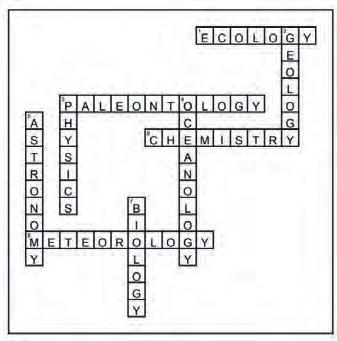
What type of dogs do chemists own?
Laboratory Retrievers
Riddle Me This: What can go up and come down without moving?
Answer: Temperature
? ? ? ? Comical Reaction
Na Na
 By Rohana Saunders (Lower Sixth, Queen Anne)
By Rohana Saunders (Lower Sixth, Queen Anne)





 Beaver reintroduction timeline into UK rivers
Beaver reintroduction timeline into UK rivers








 by Aoife Kirkham (Lower Sixth, Feilden)
by Aoife Kirkham (Lower Sixth, Feilden)
 by Rachael Elliott (Lower Sixth, Feilden)
by Rachael Elliott (Lower Sixth, Feilden)





